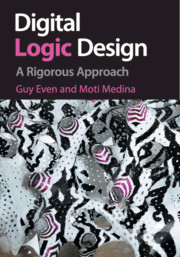
- Cited by 5
-
Cited byCrossref Citations
This Book has been cited by the following publications. This list is generated based on data provided by Crossref.
Melendy, Robert 2014. A Proposed Exercise to Reinforce Abstract Thinking for Upper-Division Computer and Electrical Engineering Students: Modeling a High-Speed Inverter Using Cognitive Representations and Abstract Algebra. World Journal of Engineering and Technology, Vol. 02, Issue. 04, p. 298.
2018. Computational Psychoanalysis and Formal Bi-Logic Frameworks. p. 38.
2018. Computational Psychoanalysis and Formal Bi-Logic Frameworks. p. 206.
2018. Computational Psychoanalysis and Formal Bi-Logic Frameworks. p. 136.
2018. Computational Psychoanalysis and Formal Bi-Logic Frameworks. p. 222.
- Publisher:
- Cambridge University Press
- Online publication date:
- November 2012
- Print publication year:
- 2012
- Online ISBN:
- 9781139226455


